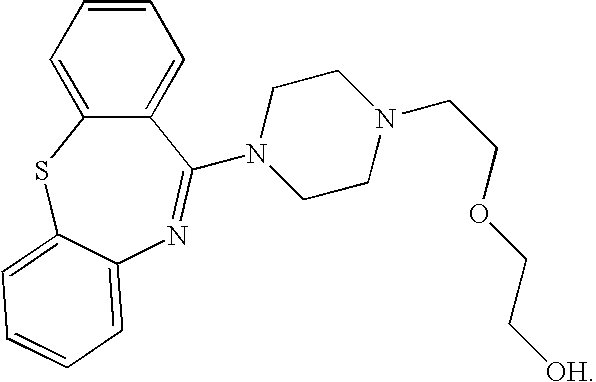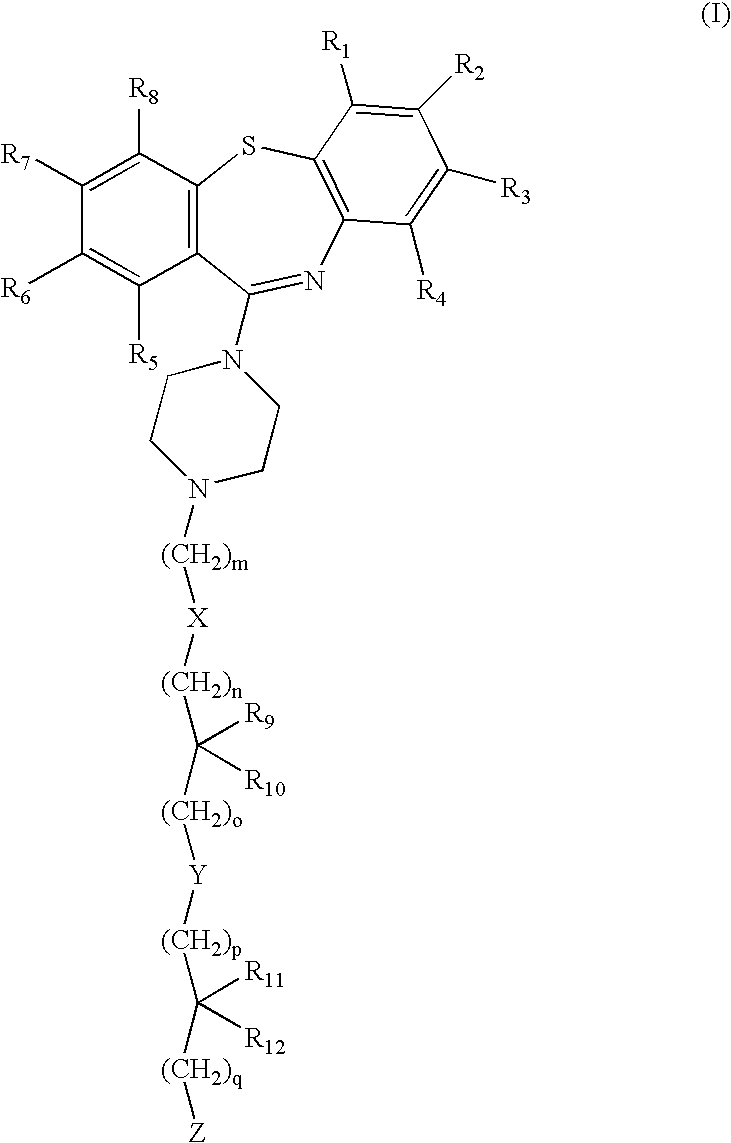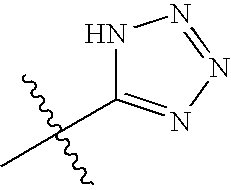Quetiapine analogs and methods of use thereof
- Summary
- Abstract
- Description
- Claims
- Application Information
AI Technical Summary
Benefits of technology
Problems solved by technology
Method used
Image
Examples
example 1
Synthesis of Quetiapine Analogs
[0495] The compounds of the invention, and related derivatives, can be synthesized by methods known to one skilled in the art.
example 2
Sleep-Inducing Properties of Compounds of the Invention
[0496] Sleep in mammals can be divided into sleep occurring during periods of rapid eye movement (REM), accompanied by substantial brain activity, and periods of non-REM (NREM) sleep, accompanied by decreased brain activity. Typically, a normal nighttime sleep period is occupied primarily by NREM sleep, and thus NREM cumulation can serve as a measure of total sleep cumulation, e.g., significantly decreased NREM can be associated with insomnia and an accumulation of “sleep debt”, e.g., an accumulated physiological need for sleep that tends to persist until a sufficient amount of additional sleep is accumulated. Thus, an increase in NREM associated with a treatment can indicate the treatment's effectiveness in treating insomnia.
[0497] Sleep quality can be associated with sleep continuity or sleep maintenance. For example, a subject with sleep apnea wakes up numerous times during a sleep period, e.g., the subject has difficulty m...
example 3
Irwin Screen Side Effects
[0505] The Irwin screen can provide useful information on potential side effects of compounds on general physiological and behavioural functions. The screen is conducted by administering the test compounds orally in 0.25% aqueous methylcellulose using male Wistar rats, a frequently used species in such studies and for which background data are readily available.
[0506] The Irwin screen tests for numerous parameters in animals that have been administered the test compound. For example, the screen can include: in-cage effects, e.g., dispersion, respiratory rate, locomotor activity, restlessness, fighting, alertness, apathy, and exophthalmus; in-arena effects, e.g., transfer arousal, spatial locomotion, ptosis, startle, tail elevation, piloerection, touch escape, positional passivity, catalepsy, tighting reflex, visual placing, grip strength, pinna, corneal, pain response, and wire manoeuvre; parameters observed in handling, e.g., cyanosis, cutaneous blood flo...
PUM
| Property | Measurement | Unit |
|---|---|---|
| Fraction | aaaaa | aaaaa |
| Time | aaaaa | aaaaa |
| Molar density | aaaaa | aaaaa |
Abstract
Description
Claims
Application Information
 Login to View More
Login to View More - R&D
- Intellectual Property
- Life Sciences
- Materials
- Tech Scout
- Unparalleled Data Quality
- Higher Quality Content
- 60% Fewer Hallucinations
Browse by: Latest US Patents, China's latest patents, Technical Efficacy Thesaurus, Application Domain, Technology Topic, Popular Technical Reports.
© 2025 PatSnap. All rights reserved.Legal|Privacy policy|Modern Slavery Act Transparency Statement|Sitemap|About US| Contact US: help@patsnap.com



